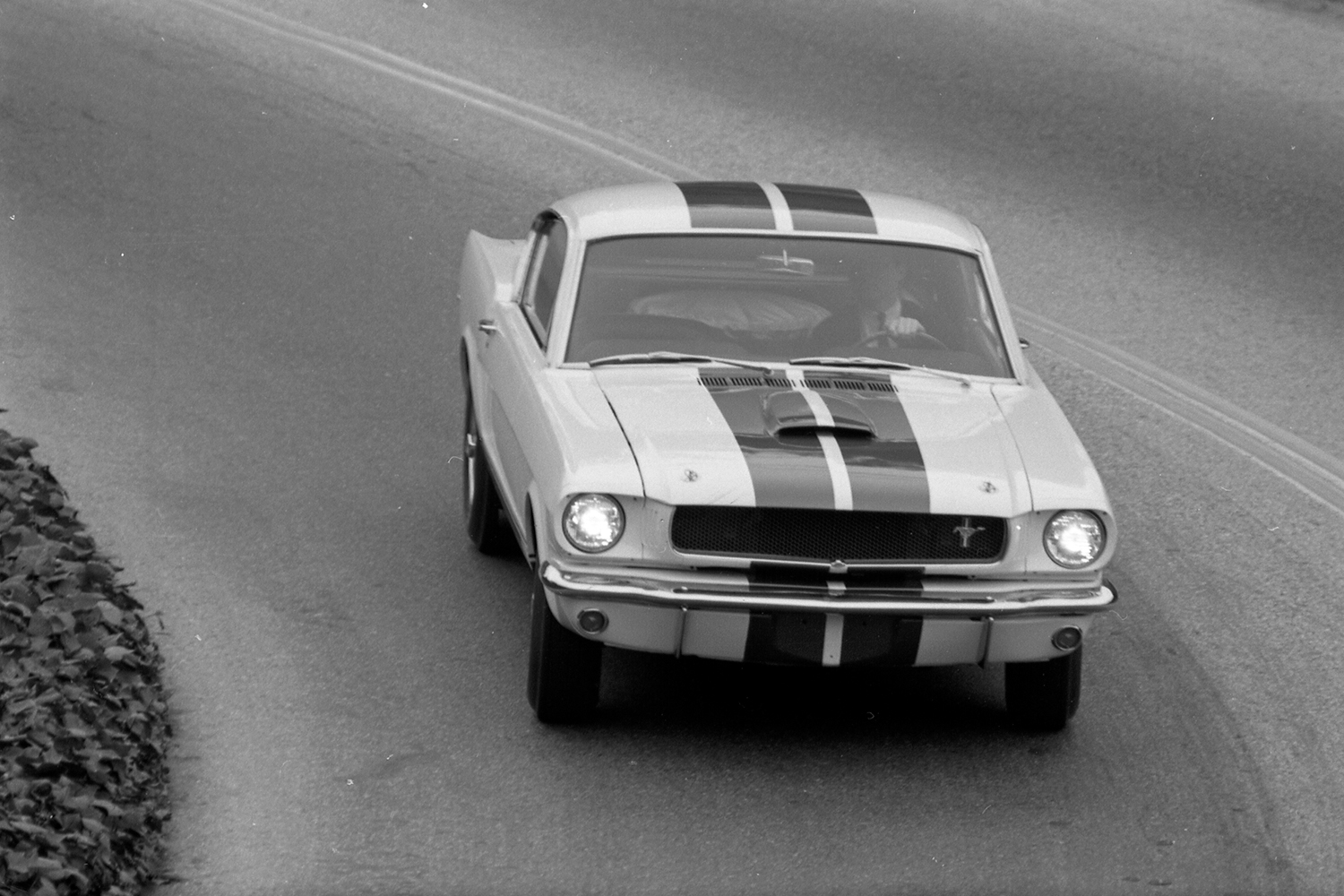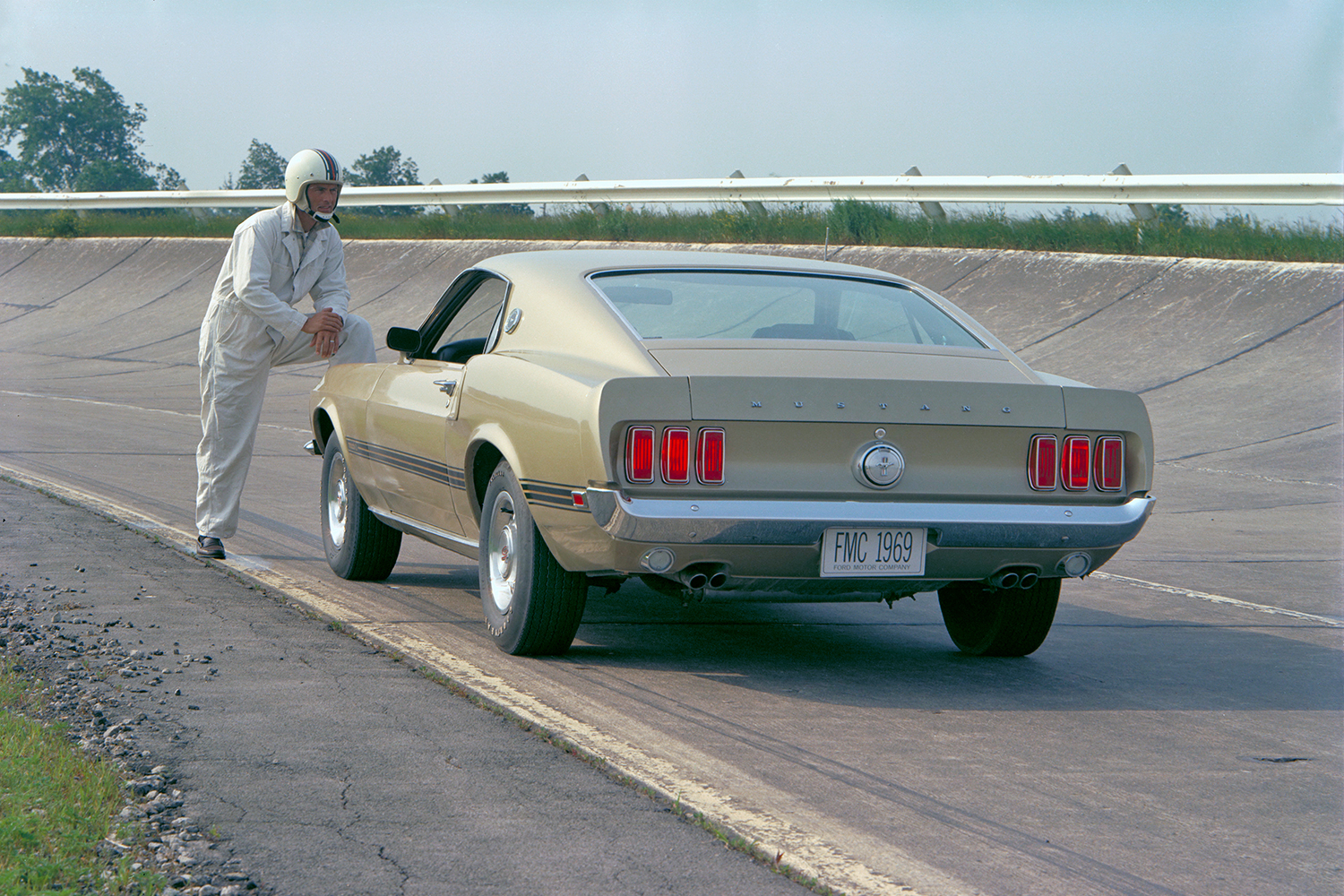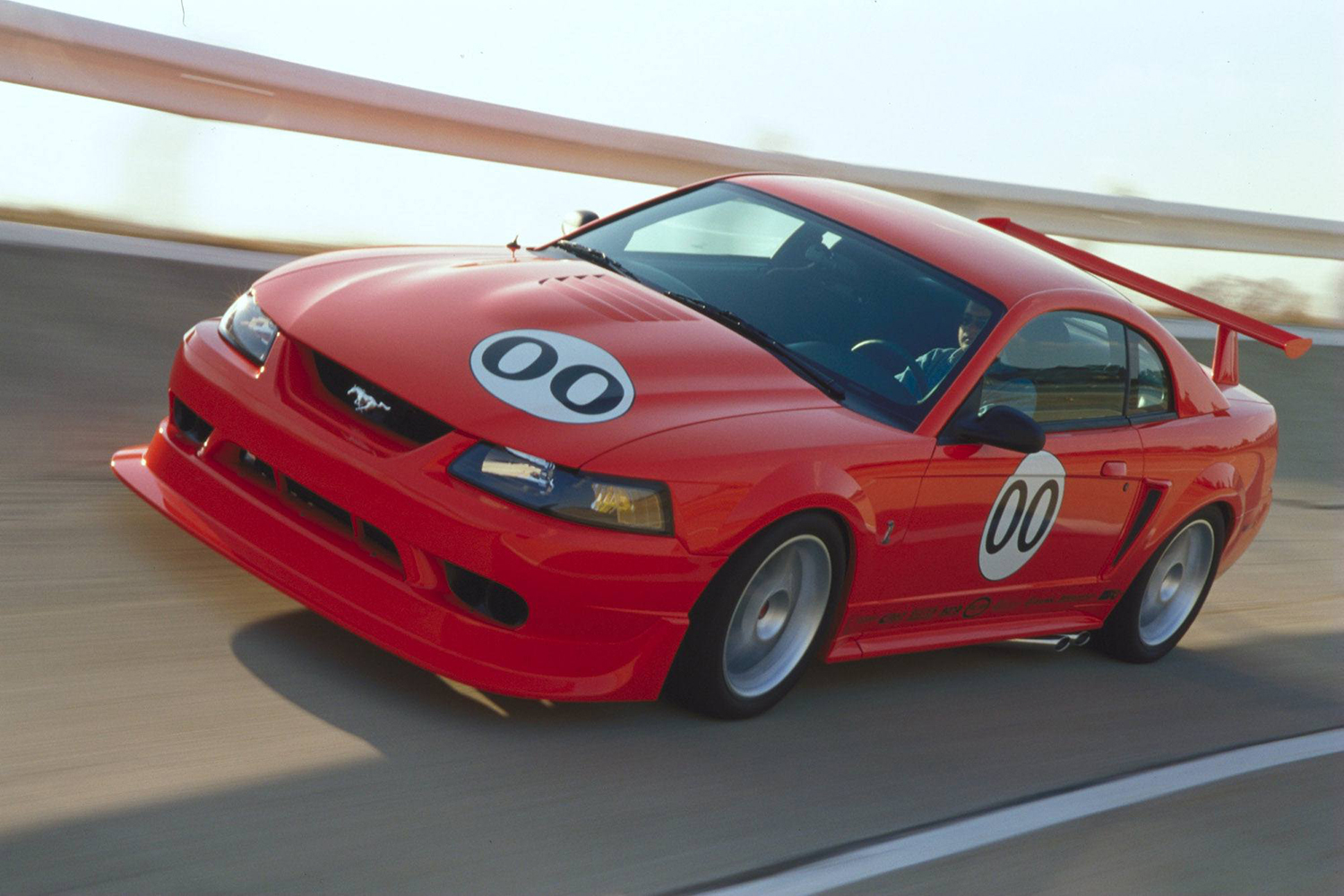
It’s a little-known fact that the original Ford Mustang was developed largely to fight head-to-head against the Chevrolet Corvair. The rear-engined Corvair famously flopped, while the Mustang became one of the best-selling and most popular sports cars of all time. Ford’s iconic pony car is now well into its sixth generation, and what a roller coaster ride it’s been. Join us as we relive the Mustang’s illustrious, 54-year-long production run by highlighting some of the most significant models from every era.
1965 Mustang GT350
Impressed by the Mustang’s performance credentials, Ford decided to build a more powerful version of the new coupe to compete in Sports Car Club of America (SCCA) events all around the nation. Executives outsourced the work to respected racer and tuner Carroll Shelby.
Starting with a Mustang fastback, Shelby added quicker steering, a sportier suspension, and larger brakes sourced from the massive station wagons Ford was building at the time. The stock 4.7-liter V8 engine was retained, but its output was bumped from 271 to 306 horsepower by adding a high-rising intake manifold and a four-barrel carburetor. The eight-cylinder spun the rear wheels via a four-speed manual transmission and a limited-slip differential.
Nimble and powerful, Shelby’s GT350 became a force to be reckoned with on the track. Today, it’s one of the most sought-after and valuable versions of the Mustang ever.
1969 Mustang Mach 1
The race between the Chevrolet Corvair and the Ford Mustang wasn’t even close, so the Bowtie fought back by launching the original Camaro in time for the 1967 model year. Plymouth unleashed the Barracuda, and AMC even joined the party with the Javelin. In short, the Mustang finally had serious rivals.
Ford expanded the Mustang lineup with a brand new model named Mach 1 in 1969 in a bid to reclaim the crown in the pony car war. Visually, it stood out with a sleek, aerodynamic body named SportsRoof as well as hood pins, a flat black hood, and side stripes. Calling the Mach 1 a head-turner is an understatement.
Ford’s newest ‘Stang backed up the muscular look with an available 428 Super Cobra Jet V8 engine that delivered 335 horsepower and 440 pound-feet of torque. These figures were northing short of impressive during the Johnson administration, and they’re still respectable today.
An all-new Mach 1 was introduced in 1971 but it was bigger and noticeably heavier than the original model. The nameplate was also applied to the Mustang II, a much smaller model that debuted in 1974 with a hatchback and a 2.8-liter V6 that provided a measly 105 horsepower.
1984 Mustang SVO
The 1984 Mustang SVO was out to prove there was a replacement for displacement. Mounted between its fender was a 2.3-liter turbocharged four-cylinder engine tuned to generate 175 horsepower at 4,000 rpm and 210 pound-feet of torque at 3,000 rpm. The turbo four made as much power as the 5.0-liter V8 that was available that same year, but it was considerably lighter and more efficient.
Ford complemented the extra power with bigger brakes, a SVO-specific suspension with larger anti-roll bars on both axles, and an upgraded steering rack. The result was a Mustang that could handle as well as it could accelerate; one capable of holding its own on a drag strip and on a twisty circuit.
Ford’s archives department remembers it developed the Mustang SVO at a time when engineers thought the Mustang and large-displacement engines were both living on borrowed time. These predictions were wrong — you can still buy a Mustang with a big ol’ V8 under the hood in 2016 — but the SVO set the stage for the EcoBoost-powered model that joined the lineup a couple of years ago.
2000 Mustang SVT Cobra R
The Cobra nameplate traces its roots back to the Ford-powered sports car that helped make Carroll Shelby one of the most respected men in the automotive industry. Ford gave the Cobra name to the Mustang’s 335-horsepower engine in 1968, and the moniker was first applied to a model when the Mustang II arrived in 1974.
The most noteworthy Cobra variant in recent memory is the Cobra R that was launched as a limited-edition model in 2000. In a way, Ford was seeking redemption; the regular Cobra was cancelled due to performance issues with the 1999 model that led to a stop-sale order and a massive, highly-publicized recall.
Ford’s now-defunct Special Vehicle Team (SVT) dropped a 5.4-liter V8 rated at 385 horsepower in the Cobra R’s engine bay. Up front, the five-spoke alloy wheels hid Brembo brakes as big as the steel wheels typically found on economy compact cars. And since it was designed for the track, the Cobra R’s list of standard features didn’t include A/C, a radio, cruise control, or even a back seat.
Exclusively offered in red, the Cobra R received a body kit that included a front splitter, a power dome hood, side skirts, and a huge wing out back. Even those who had no clue what was under the hood couldn’t deny the R looked fast, and it sounded even faster.
2016 Mustang GT350R
The modern-day Shelby GT350 Mustang aims to rekindle the spirit of the original model, and the GT350R cranks the dial up to 11. It’s billed as the most track-capable ‘Stang ever to come out of the factory.
Helping the R live up to that bold claim is Ford’s first-ever V8 engine fitted with a flat-plane crankshaft. The 5.2-liter unit generates over 500 horsepower and 400 pound-feet of torque. It roasts the rear tires via a six-speed manual transmission and a Torsen limited-slip differential.
The Blue Oval has put the 350 on a diet by removing the A/C unit, the stereo, the rear bench, the rear-view camera, and the tire repair kit, among other add-ons. And, 19-inch wheels crafted entirely out of carbon fiber help shed 52 pounds of unsprung weight.
Ford and Shelby hit the bull’s eye with the GT350R. Notably, it recently took home Digital Trends’ Performance Car of the Year award. It’s a limited edition model, so expect this pony car to fetch big bucks at high-brow auctions in a few decades’ time.
2019 Ford Mustang Bullitt
This year’s Detroit Auto Show started off on a bright note for muscle-car and movie enthusiasts, as Ford introduced the long-awaited 2019 Mustang Bullitt. It’s a modern interpretation of the car Steve McQueen famously honed on the streets of San Francisco to chase down hitmen 50 years ago.
The Blue Oval hit the nail on the head when it comes to styling. The Bullitt comes standard in dark highland green, a tribute to the original, though buyers can order shadow black. It also receives subtle chrome accents around the grille and the windows, and it rides on 19-inch, five-spoke wheels. Notice it doesn’t come with stripes, decals, or even emblems; subtlety characterizes the Bullitt, then and now.
Offered only as a coupe, the Bullitt is based on the latest Mustang GT. Its 5.0-liter V8 engine sends 480 horsepower and 420 pound-feet of torque to the rear wheels through a six-speed automatic transmission. Give it enough tarmac and it will sprint to 163 mph.
Editors' Recommendations
- Ford Mustang Mach-E Rally kicks up some dirt
- 2020 Chevrolet Camaro vs. 2020 Ford Mustang
- 2021 Ford Mustang Mach-E first drive review: Electric muscle
- 2021 Ford Mustang Mach-E will offer Active Drive Assist hands-free driving tech
- Most Ford Mustang Mach-E reservation holders go for extended-range battery














































